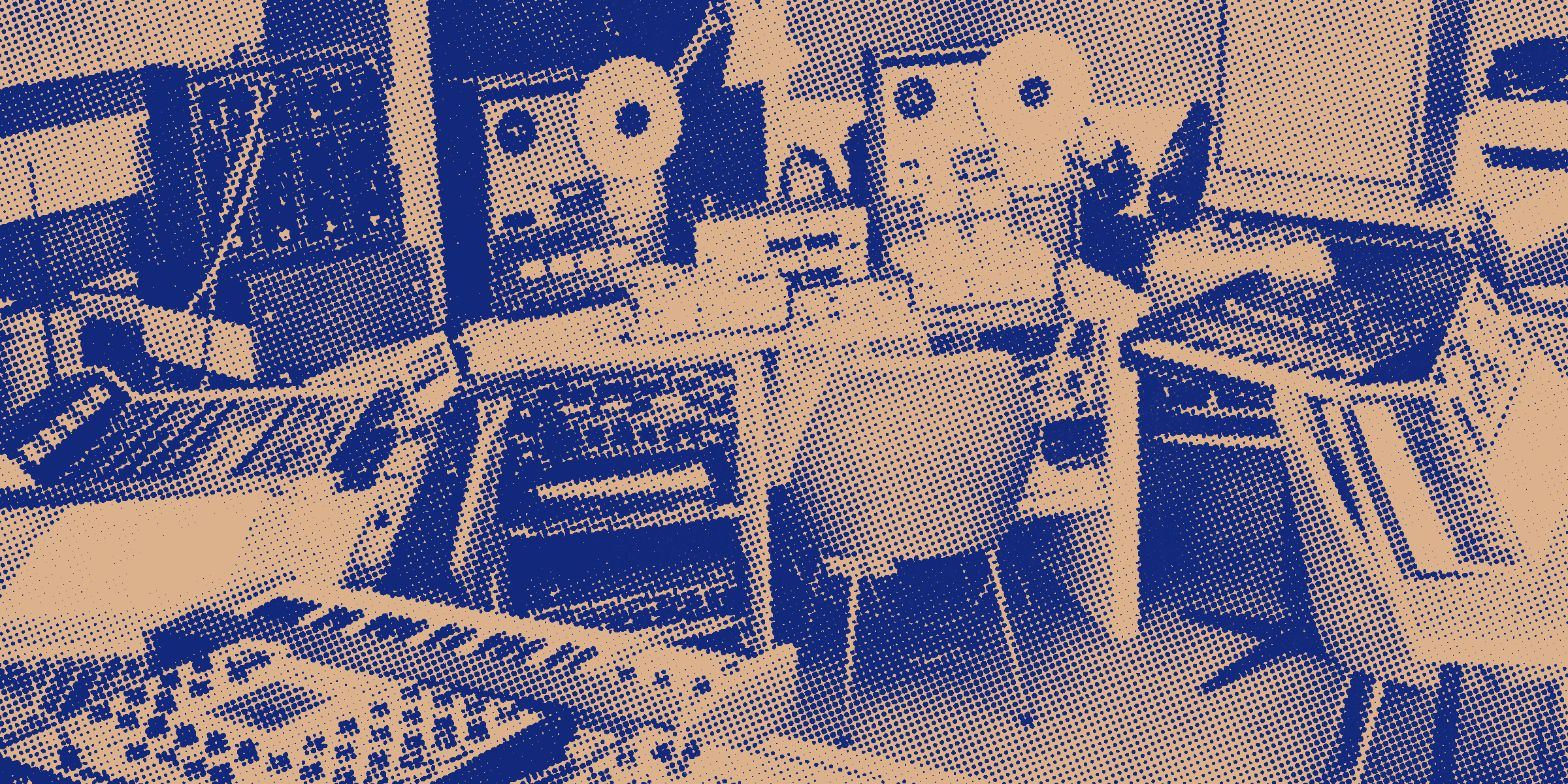Musique Concrète and the shape of sound to come
Explore Musique Concrète's origin, influence, and legacy in modern music. Dive into the world of sound beyond traditional musical boundaries.

Originating from the heart of post-World War II France, Musique Concrète emerged as a bold foray into uncharted musical territories. Unlike traditional musical genres bound by the limitations of melodic, harmonic, and rhythmic constructs, Musique Concrète was conceived with the audacious ambition of expanding the very essence of sound. It rebelled against the convention, declaring that the material for music was not limited to the traditional symphonic instruments. Instead, it proposed that music could encompass any auditory experience, thus broadening the music arena from well-tempered pitches to a limitless acoustic environment. In doing so, it turned the very notion of music on its head, opening up new possibilities for sound expression and appreciation.
The Origins and Pioneers
Musique Concrète, or "Concrete Music," was the brainchild of French composer and theoretician Pierre Schaeffer. Operating from the late 1940s, Schaeffer embarked on a radical sonic journey from within the walls of the RTF (Radiodiffusion-Télévision Française) studio. He did not merely play with traditional elements such as melody, harmony, or rhythm. Instead, he ventured into the unexplored territories of sound — the noises, timbres, and textures that formed the backdrop of our everyday lives yet remained largely neglected by conventional music. Collaborating with like-minded individuals such as Pierre Henry, Schaeffer laid the groundwork for a movement that would challenge preconceived notions about music and push the boundaries of what was considered possible within the sonic realm.
Crafting Sound Objects
Schaeffer and his contemporaries stood in stark contrast to the tonal-centered Western music of their time. They constructed their compositions from recorded, often everyday, sounds—be it a clock ticking, a train chugging, a door creaking, or even a human sigh. Through techniques such as cutting, reverb, and speed alteration, these everyday noises were transformed into 'sound objects'. These objects, far removed from their original contexts, were then arranged to create a unique sonic landscape. This process was not just a novel form of sound design but a radical departure from traditional composition methods, firmly positioning Musique Concrète as a revolutionary force within the world of music. This 'object-oriented' approach to music was a conceptual leap, emphasizing the acoustic and aesthetic properties of sound above all else. By focusing on the intrinsic characteristics of sound, irrespective of its source, Musique Concrète elevated sound design to an art form, culminating in complex and nuanced compositions that continue to inspire and intrigue listeners to this day.
The Magnum Opus: "Symphonie pour un homme seul"
If there is one piece that exemplifies the philosophy of Musique Concrète, it is Pierre Schaeffer's "Symphonie pour un homme seul" (Symphony for a Man Alone), created in collaboration with Pierre Henry in 1950. Constructed from a myriad of ordinary noises, this work is a monumental sonic collage that challenges the traditional notions of music. Sounds of human movement, murmurs, and even a heartbeat were transformed into an orchestration that, in its entirety, pushes the boundaries of acoustic experience. The symphony deliberately eschews the predictable structures of traditional music, focusing instead on the raw beauty of sound itself. It is a testament to the audacious spirit of Musique Concrète, an invitation to perceive sound in its purest form, and an enduring symbol of the movement's relentless pursuit of sonic exploration.
The Widespread Influence of Musique Concrète
Since its inception, Musique Concrète has left a mark on the musical landscape. Its radical redefinition of what constitutes 'music' led to significant advancements in electronic music, laying the groundwork for future genres like ambient, industrial, and glitch music. Including the birth of bands like Germany's synth-pop pioneers Kraftwerk. These genres owe their existence to the brave explorations of Schaeffer and his contemporaries, who dared to think outside the tonal box and dared to redefine sound's role in music.
Moreover, the genre's impact extends beyond the realm of music. Its innovations in sound manipulation techniques had a profound influence on sound design in cinema and television. The practice of using everyday sounds and transforming them into a narrative tool is now a standard approach in these fields, contributing significantly to the depth and richness of audio-visual experiences.
Criticisms and Counterpoints
Despite its revolutionary approach and enduring influence, Musique Concrète has not been without criticism. Some have accused it of being overly intellectual, inaccessible, or lacking emotional resonance due to its departure from traditional melodic and harmonic structures. However, its proponents argue that the genre fosters a renewed and intimate relationship with the everyday sound environment. By shifting the listener's focus from the purely musical to the acoustic properties of sound, Musique Concrète encourages a new, explorative way of listening. It challenges us to engage with our sonic environment in a more profound way, to find music in unexpected places, and to embrace sound as a medium of expression that is as emotionally potent as any conventional musical form.
Musique Concrète in the Modern Era
In the contemporary digital age, Musique Concrète retains a vibrant relevance. The evolution of music production technologies has democratized the tools once exclusive to the pioneers of Musique Concrète. Now, musicians around the globe have the capacity to experiment and innovate in ways Schaeffer and his contemporaries could only have dreamed. The advent of sampling and digital signal processing technologies has given rise to a new generation of artists who continue to expand on the principles of Musique Concrète, further blurring the lines between music and noise, between art and life.
Musique Concrète: A Living Entity
Today, Musique Concrète is not just an artefact of music history; it is a living, breathing, evolving entity that continues to shape our aural experiences. By reminding us that music can exist beyond notes and scales, Musique Concrète challenges our perceptions and encourages us to listen, truly listen, to the world around us. This sonic revolution, born in the studios of post-war France, continues to echo through the annals of music, asking us what is sound, and where does music begin and end? It prompts us to be active listeners, to engage with our acoustic environment, and ultimately, to redefine our understanding of what music can be.


